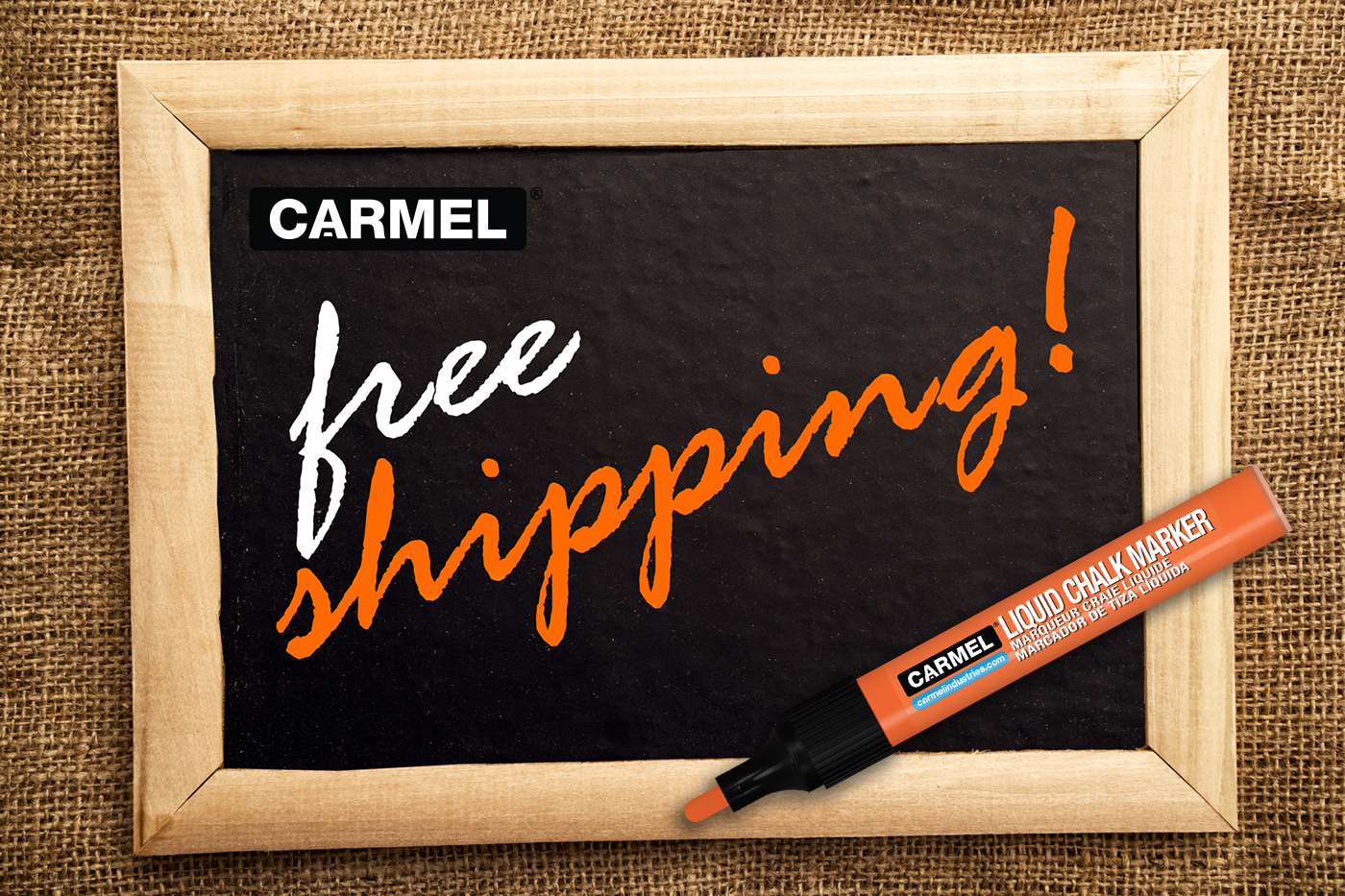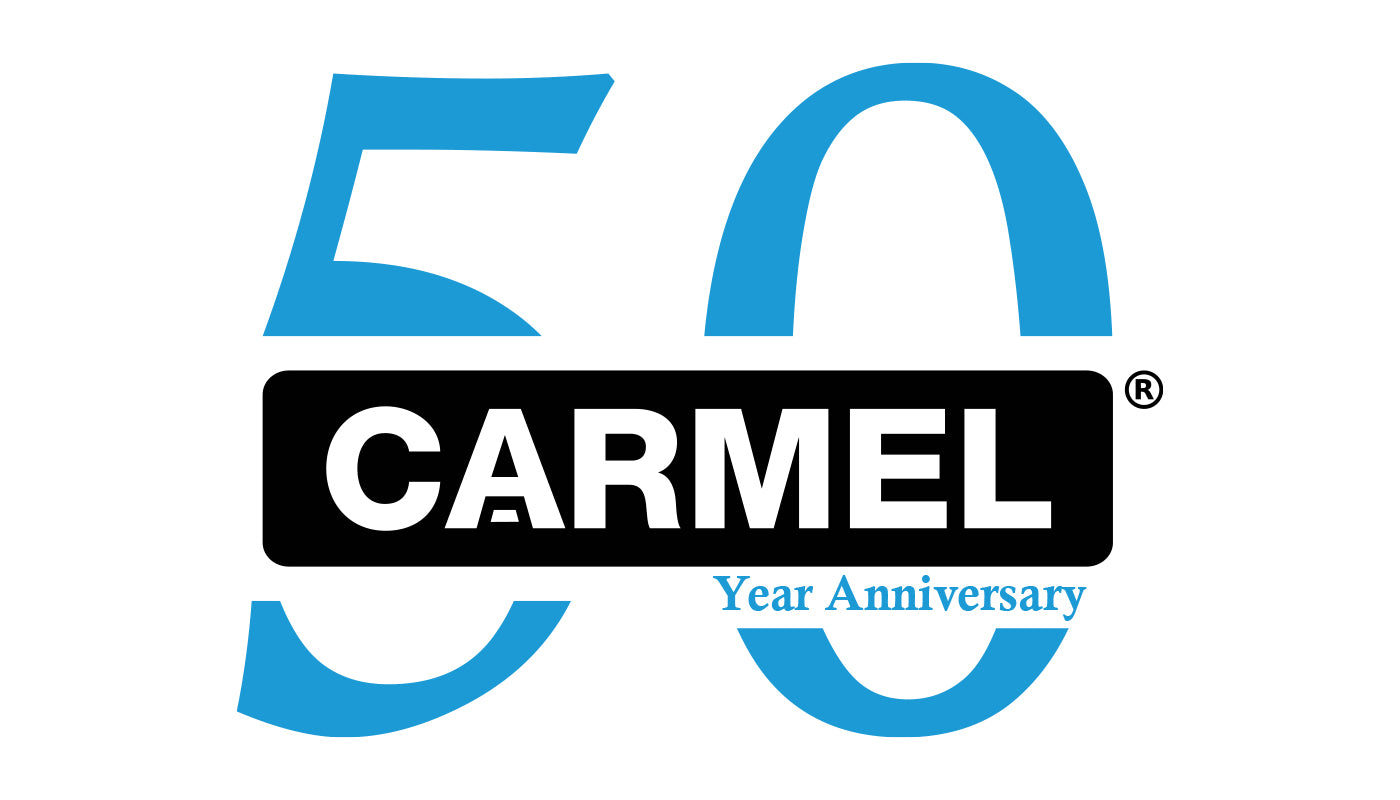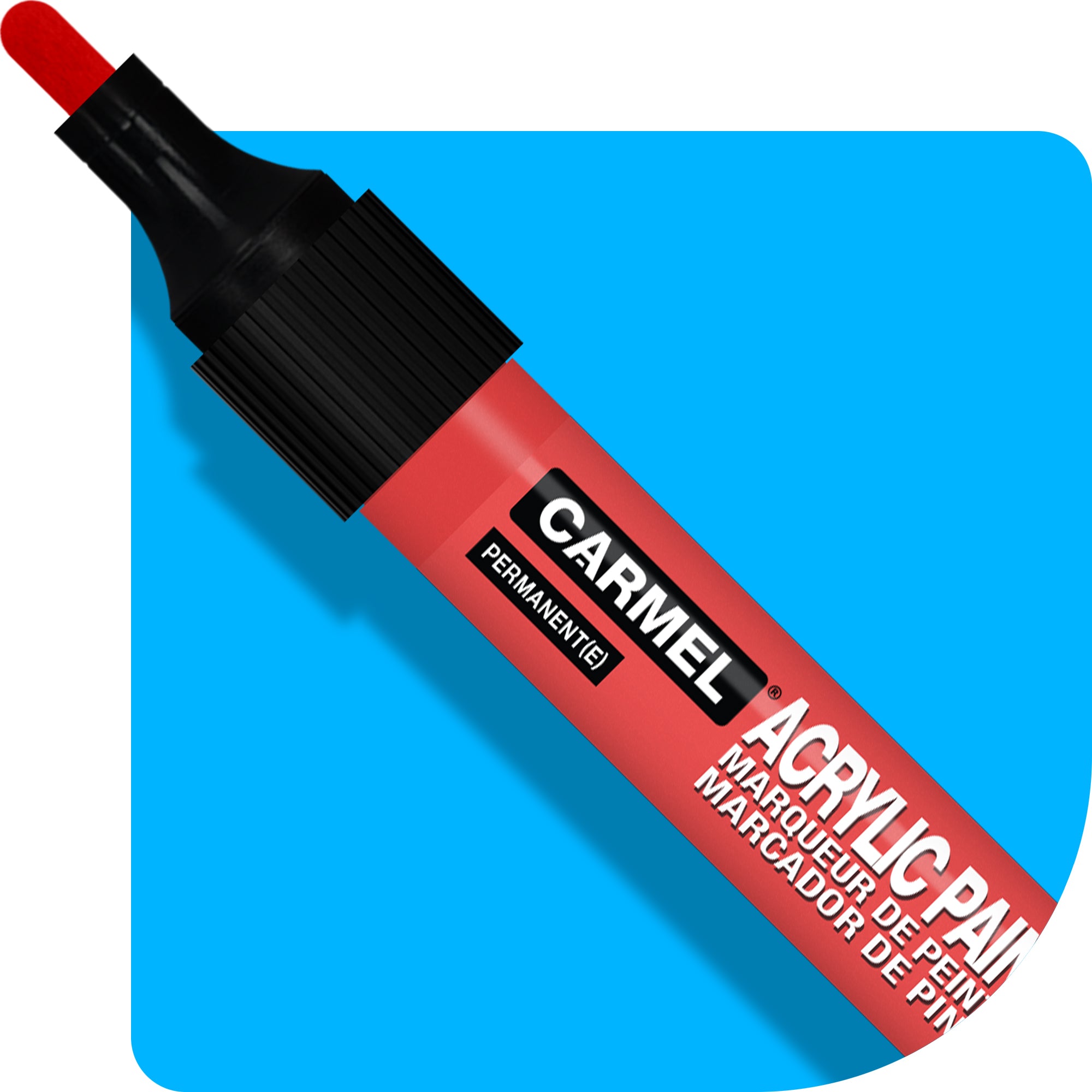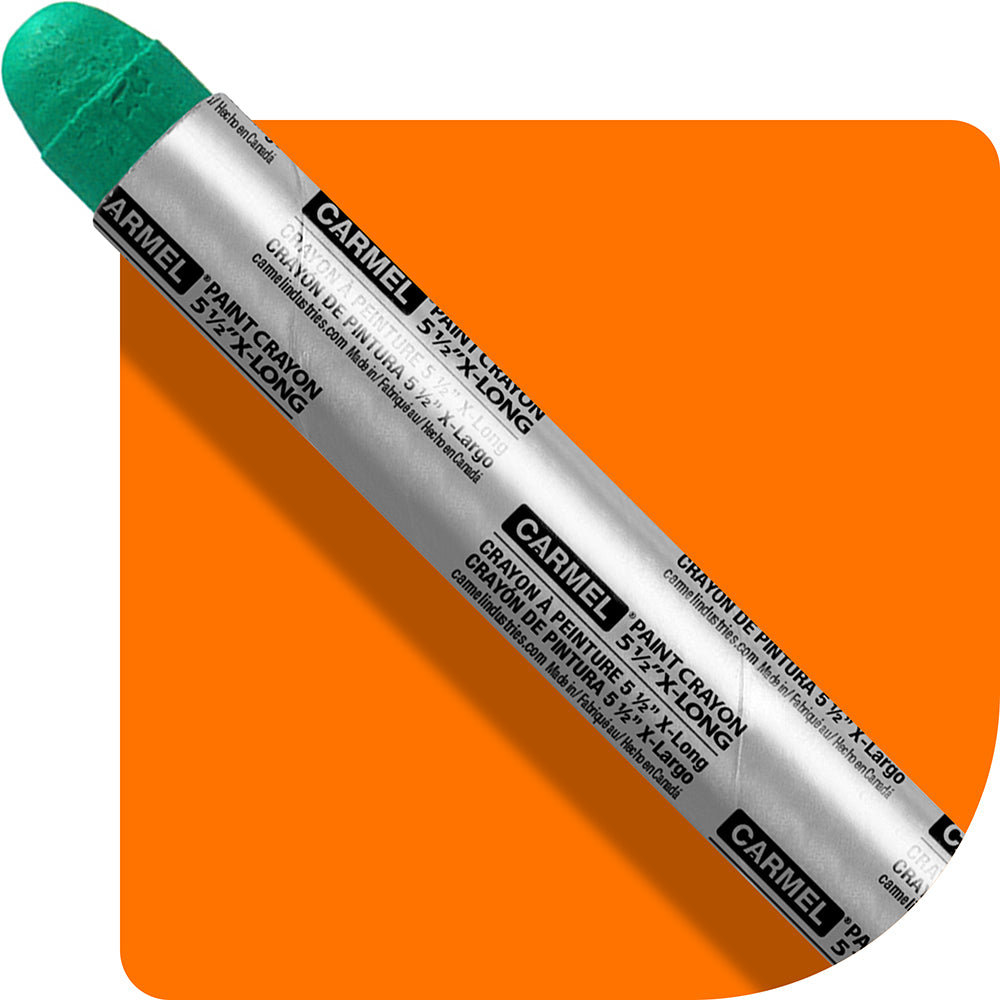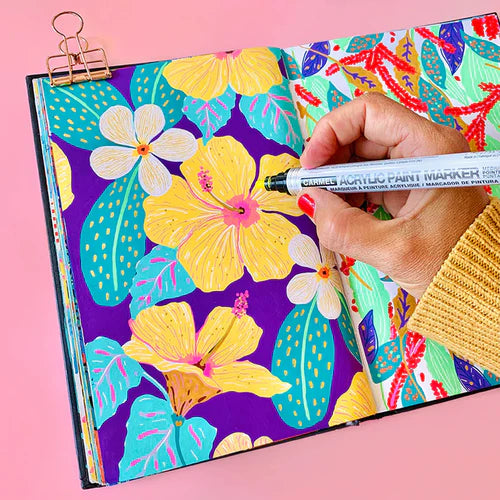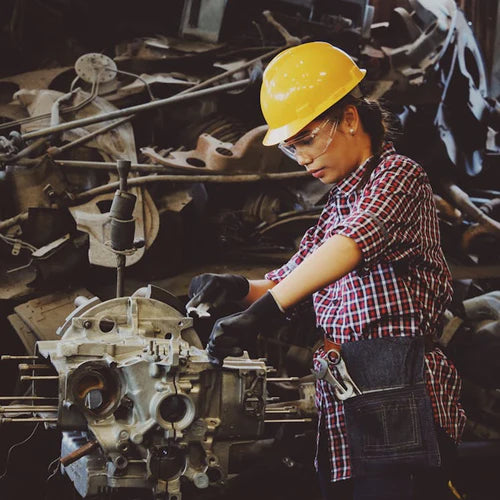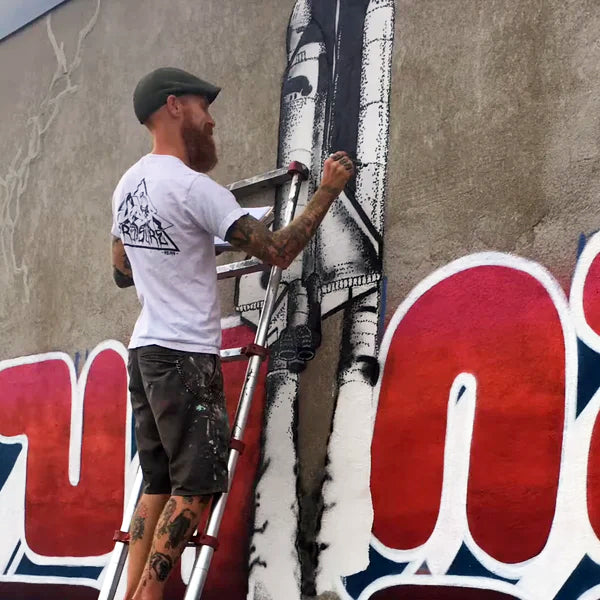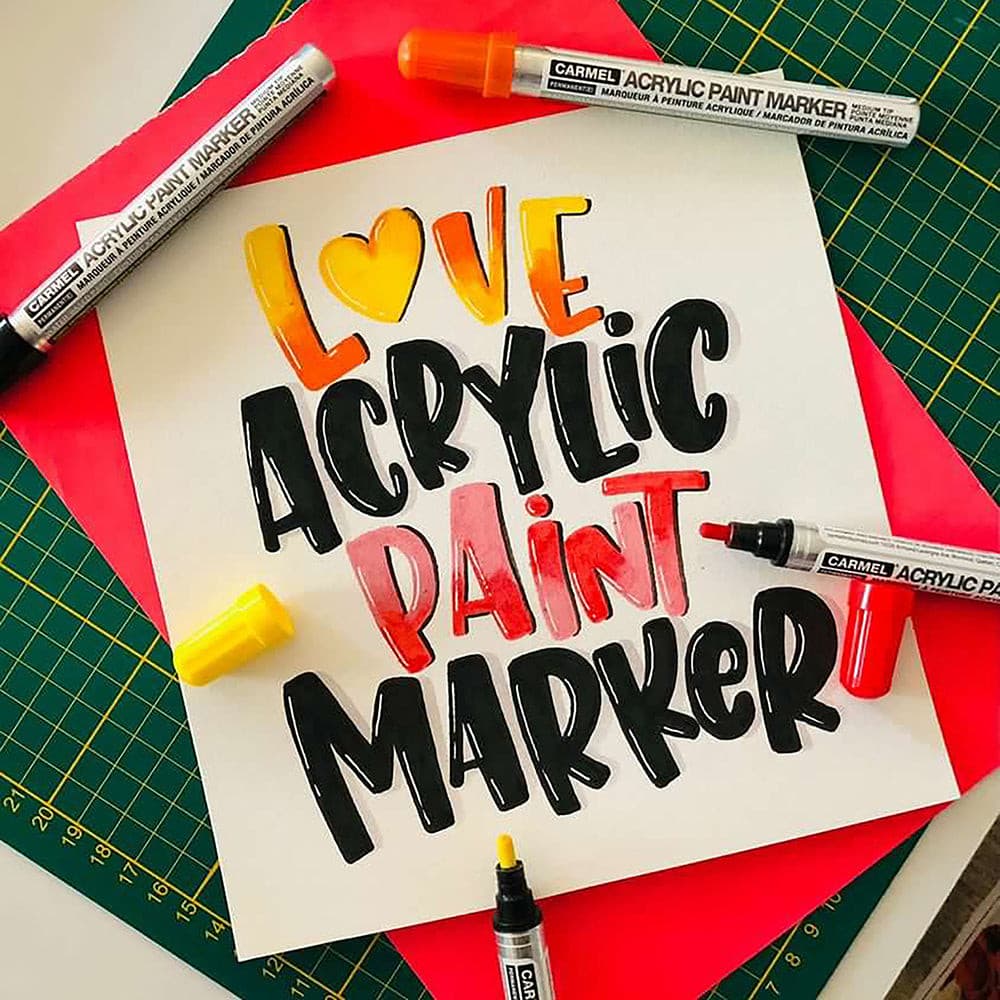Join us as we explore the advantages of acrylic and oil paint markers, helping you make informed decisions for your next masterpiece.
Selecting the ideal paint marker for your project can be daunting without the proper guidance. That's why Carmel crafted this concise breakdown highlighting the perks of both acrylic and oil paint markers.
At Carmel, we believe that every artist thrives when equipped with tools that complement their unique style and preferences. Just as no two artworks are alike, neither are the methods and mediums used to create them. Whether you prefer the versatility of acrylic or the richness of oil, embrace what resonates with you most. After all, it's the artist's individual expression that truly brings a piece to life. So, let's dive in and discover which paint markers speak to your creative spirit!
Quick Dry or Patience Prevails: Navigating Drying Times with Paint Markers
One of the most notable distinctions between acrylic and oil paint is their drying times. While oil paint may require up to twelve hours to dry thoroughly, acrylic paint dries rapidly, sometimes within two to seven minutes, granting less flexibility during the creative process.
 Artists must consider the drying time that best aligns with their artistic rhythm and workflow. Some may thrive with the swift drying of acrylics, allowing for quick layering and adjustments, while others may prefer the extended drying time of oils, offering more flexibility for blending and nuanced detailing. Whichever path you choose, embracing the drying time that suits your pace ensures a smoother and more enjoyable creative experience.
Artists must consider the drying time that best aligns with their artistic rhythm and workflow. Some may thrive with the swift drying of acrylics, allowing for quick layering and adjustments, while others may prefer the extended drying time of oils, offering more flexibility for blending and nuanced detailing. Whichever path you choose, embracing the drying time that suits your pace ensures a smoother and more enjoyable creative experience.
Choosing the Perfect Surface for Oil and Acrylic Painting
The Essential Role of Primer: Why Artists Swear By It.
Using a primer with oil paint is like laying down the perfect foundation before building a house—it's all about setting the stage for success! Primers create a smooth, uniform surface that helps the oil paint adhere better and last longer. Plus, they can prevent the oil from seeping into the canvas fibers, ensuring your masterpiece stays vibrant and authentic to your vision. So, think of primer as your painting's best friend,
Exploring the Diversity of Colors in Acrylic Paints versus Oil-Based Paints.
Have you ever noticed why some paint brands offer a wider range of colors in their acrylic paint lines compared to their oil-based counterparts? Well, it's all about chemistry! Acrylic paint pigments can be formulated to achieve a broader spectrum of colors because they're water-based and dry through evaporation, which allows for more effortless blending and mixing of pigments. On the other hand, oil-based paints rely on pigments suspended in oil, which can limit the variety of colors due to chemical constraints.
Additionally, the drying time of oil paints tends to be longer, making it more challenging to manufacture and store a wide range of colors without them drying out or becoming unusable. So, next time you're browsing the paint aisle, keep in mind that the vibrant array of colors in acrylic paint lines is all thanks to their unique chemistry and versatility!
Carmel's permanent acrylic paint retains its vibrant colors due to the high-quality pigments used in its formula, which possess excellent lightfastness properties, preventing them from fading over time. Additionally, acrylic paint provides sharp edges, enabling artists to create intricate graphic designs. However, it's important to note that the binders in acrylic paint dry clear, which may result in subtle color changes, particularly noticeable in darker hues, as they dry.
On the other hand, oil paint offers superior color blending capabilities thanks to its extended drying time. Achieving similar blending effects with acrylic paint requires the addition of a retarder or soft gel gloss. However, it's worth noting that the binder in oil paint tends to yellow over time, which can lead to gradual color fading.
Indoor vs. Outdoor: Choosing Between Acrylic and Oil Paint for Your Art Projects.
Anyone who has had the experience of working, even briefly, with oil-based paint in a confined area knows all too well about its potent odor, which can often lead to dizziness and discomfort. Similarly, solvent-based acrylic paint markers can emit similar fumes. However, Permanent Water-Based Acrylic Paint Markers offer a stark contrast. Not only are they odorless, but their emissions are also non-toxic, making them an excellent choice for working in enclosed spaces and sidestepping the issues associated with solvent-based alternatives.
Well, there you have it. Both oil-based and acrylic paint markers bring their perks, depending on what you have in mind. So, to make sure you're picking the perfect fit, just think about the project you're envisioning:
